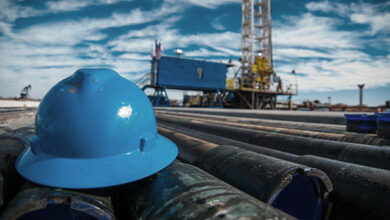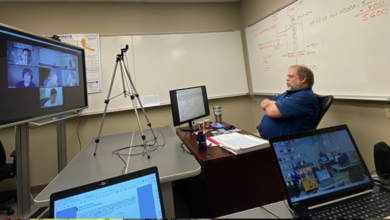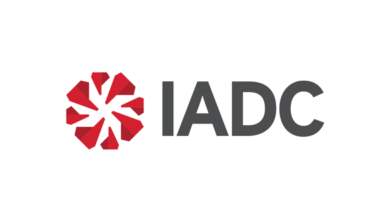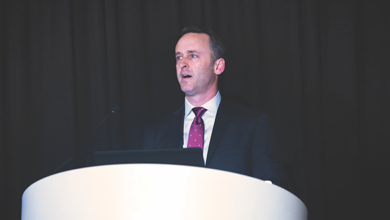Sidetracking from collapsed liner saves 14 rig days
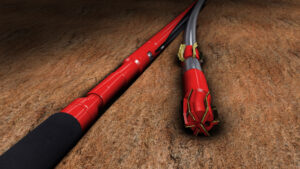
Weatherford recently announced a success in an ultra-deepwater Gulf of Mexico operation that saved a major international oil company (IOC) 14 rig days valued at approximately $14 million. By sidetracking from a collapsed expandable liner, the reentry operation eliminated the time and cost associated with re-drilling and re-casing a 3,000-ft hole, resulting in the first cased-hole sidetrack completed using a whipstock system in a 13 3/8-in. expandable liner.
The IOC requested off-the-shelf options that would enable sidetracking from the collapsed liner while limiting flow rates and pressures. Weatherford was selected to deploy its Shallow-Angle QuickCut casing-exit system with the MultiCatch anchor as an available solution. The system enabled installing a window in the 13 3/8-in. expandable liner and allowing a 13 1/2-in. drilling bottomhole assembly (BHA) and 12 1/4-in. casing to pass the whipstock without issue. Two additional milling BHAs were used to open the window to the full outside diameter (OD). A total of 16 mills were shipped, nine of which had custom ODs and were used during the operation.
Throughout the operation, the system maintained a low dogleg and smoothly transitioned from the main bore to the sidetrack, all while minimizing risks associated with thin-wall liners and channeled cement.
Shell and Equinor to collaborate on digital technologies
Shell and Equinor have signed a Memorandum of Understanding (MOU) on digital collaboration to develop solutions and methods through the exchange of expertise within areas like data science, artificial intelligence and 3D printing.
The collaboration is expected to entail co-innovation across the whole value chain, such as maintenance, production optimization and supply chain management.
“We are already collaborating closely in the Open Subsurface Data Universe (OSDU) initiative and see many mutual benefits as both companies have applied cloud-based digital solutions as an approach to our industry’s digital transformation,” Torbjørn Folgerø, Chief Digital Officer, Equinor, said. “Such collaborations are increasingly important to strengthen safety, reduce carbon emissions and realize value by applying digital technologies.”
The agreement will be further detailed on a project basis. It will provide the companies with a foundation to explore specific digital initiatives and projects.
“Open innovation is key to accelerating digital innovation across the energy industry,” Alexander Boekhorst, Vice President for Digitalization and Computer Science, Shell, said. “Collaborating and building on others’ strengths is critical to deliver competitive and affordable technology. We are excited about this opportunity to co-develop digital technology with Equinor.”
RAR Plus system completes 200th mooring line release
Delmar Systems recently completed the 200th mooring line release using the RAR Plus Releasable Mooring System during Equinor’s Barents Sea drilling campaign utilizing Odfjell’s Deepsea Atlantic semisubmersible drilling rig. The rig disconnection was performed in less than 1.5 hours and without assistance from an anchor handling tug supply (AHTS) vessel.
RAR Plus is a fully redundant rig anchor release that allows mooring lines, under tension, to be released from the drilling unit. This eliminates the requirement for an AHTS vessel and provides for immediate departure from the well location.
ExxonMobil proposes industrywide methane regulations framework
ExxonMobil has released a model framework for industrywide methane regulations and urged stakeholders, policymakers and governments to develop comprehensive, enhanced rules to reduce emissions in all phases of production.
The ExxonMobil model framework is based on its voluntary methane reduction program, which involves prioritized replacement of components with a high-leak potential at production sites, technology enhancements to infrastructure and substantial data gathering and research. More comprehensive than current federal rules, the proposed regulations would apply to new and existing sources. The company has reduced methane emissions from its US unconventional operations by 20% since 2016 and remains on track to reach its target of 15% reductions across the company.
According to the framework, regulations should address and include four primary requirements to achieve meaningful reductions in methane emissions:
- Leak detection and repair programs across the oil and gas infrastructure;
- Minimization of venting;
- Operational equipment controls; and
- Record keeping and reporting to support agency enforcement.
ExxonMobil says it will continue to work with state and federal regulators, industry and non-governmental organizations to develop and implement cost-effective and reasonable methane-emission regulations.

